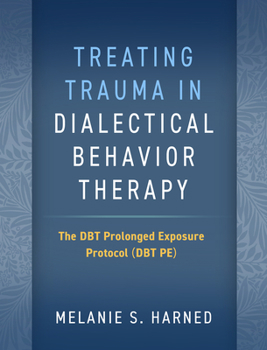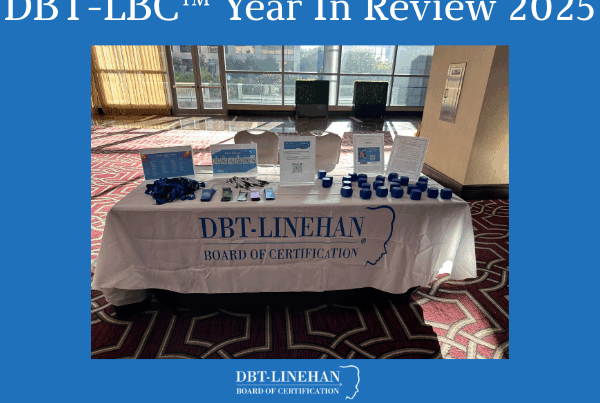Exciting news from the research corner on the effectiveness of delivering the DBT-PE protocol! Check out this article by M.S. Harned, S.C. Schmidt, K.E. Korslund, et al., Does Adding the Dialectical Behavior Therapy Prolonged Exposure (DBT PE) Protocol for PTSD to DBT Improve Outcomes in Public Mental Health Settings? A Pilot Nonrandomized Effectiveness Trial with Benchmarking, Behavior Therapy (2020). The study reviewed the impact of adding the DBT PE protocol to standard DBT to measure differences in effectiveness for clients receiving PTSD treatment in public mental health settings. The DBT PE protocol was offered in addition to standard DBT in four separate community agencies in treatment as usual environments.
Outcomes showed that clients receiving treatment with DBT PE had a greater decrease in PTSD symptoms than those receiving DBT alone. Of note, this study was able to include adolescents and adults, all genders, and racial, ethnic, and sexual minority clients. This study supports the potential of effectively transferring the DBT PE protocol to community health care settings, allowing a wider scope of client access to effective PTSD treatment. See the entire article here: https://www.sciencedirect.com/science/article/abs/pii/S0005789420301192
Don’t think we forgot about telehealth! In the COVID era, it has become vital to provide effective evidence-based treatment via video telehealth. In the article by Wells, Morland, Wilhite, and Grubb et al, Delivering Prolonged Exposure Therapy via Videoconferencing During the COVID-19 Pandemic: An Overview of the Research and Special Considerations for Providers, Journal of Traumatic Stress ( 2020), the outcome of a randomized controlled trial that showed a significant reduction in PTSD symptoms regardless if the protocol was delivered through telehealth or in person. Effective outcomes were also maintained at a 6 month follow up (Acierno et al., 2017). Another study examined PE delivered in three ways (video telehealth at home, video telehealth in a clinic setting, and in person real time sessions) and examined the efficacy of all methods on PTSD symptoms. The results showed no significant differences between outcomes, and all were associated with significant reductions in PTSD symptoms. (Morland et al., 2019).
In addition, the authors provide several clinical suggestions for delivering effective PE treatment via video telehealth. Examples included using safety plans that include emergency support people in a client’s physical environment, as well as additional therapeutic contact with client social supports by the clinician as needed. Ways to protect client privacy are introduced, including brainstorming alternate session locations, purchasing white noise machines, and offering appointment times conducive to childcare needs.
Anticipating technology failures helps clients and providers cope ahead, with various backups in place to ensure effective sessions. For imaginal sessions, more frequent orientation to potential safety behaviors at home is suggested. Also, increasing verbal prompts during an imaginal session may also help maintain client engagement.
The challenge of conducting in-vivo exposures during a pandemic is also reviewed, with examples included for safe alternatives both at home and in public using social distancing. See the article in its entirely here https://onlinelibrary.wiley.com/doi/full/10.1002/jts.22573





